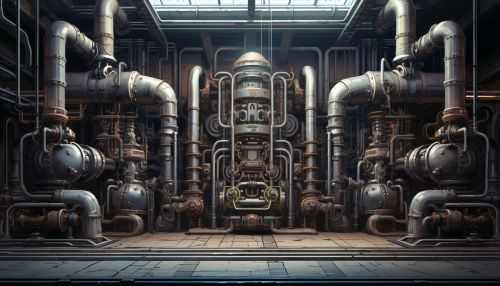Steam Turbine
Introduction
A steam turbine is a device that extracts thermal energy from pressurized steam and uses it to do mechanical work on a rotating output shaft. Its modern manifestation was invented by Sir Charles Parsons in 1884. The steam turbine is a form of heat engine that derives much of its improvement in thermodynamic efficiency from the use of multiple stages in the expansion of the steam, which results in a closer approximation to the ideal reversible process.


History
The first device that can be classified as a reaction steam turbine was little more than a toy, the classic Aeolipile, described in the 1st century by Hero of Alexandria in Roman Egypt. In 1551, Taqi al-Din in Ottoman Egypt described a steam turbine with the practical application of rotating a spit. Steam turbines were also described by the Italian Giovanni Branca (1629) and John Wilkins in England (1648).
Principle of Operation and Design
A steam turbine is a device that extracts thermal energy from pressurized steam and uses it to do mechanical work on a rotating output shaft. Its modern manifestation was invented by Sir Charles Parsons in 1884. Because the turbine generates rotary motion, it is particularly suited to be used to drive an electrical generator – about 90% of all electricity generation in the United States (1996) is by use of steam turbines.
Types of Steam Turbines
There are several classifications for steam turbines. The two general categories are impulse turbines and reaction turbines.
Impulse Turbines
The impulse turbine is composed of moving blades alternating with fixed nozzles. In the impulse turbine, the steam is expanded in fixed nozzles and remains at constant pressure when passing over the blades.
Reaction Turbines
The reaction turbine is composed of rows of fixed and moving blades. In the reaction turbine, the steam is expanded in fixed nozzles and also in the moving blades, the pressure drops occurring in both fixed and moving blades.
Applications
Steam turbines are used in many different areas, some of which include driving electrical generators, for process steam applications, and for marine propulsion.
Efficiency
The efficiency of any turbine or engine can be defined as its ability to convert the input energy into useful output energy which is expressed in the form of the following equation.
